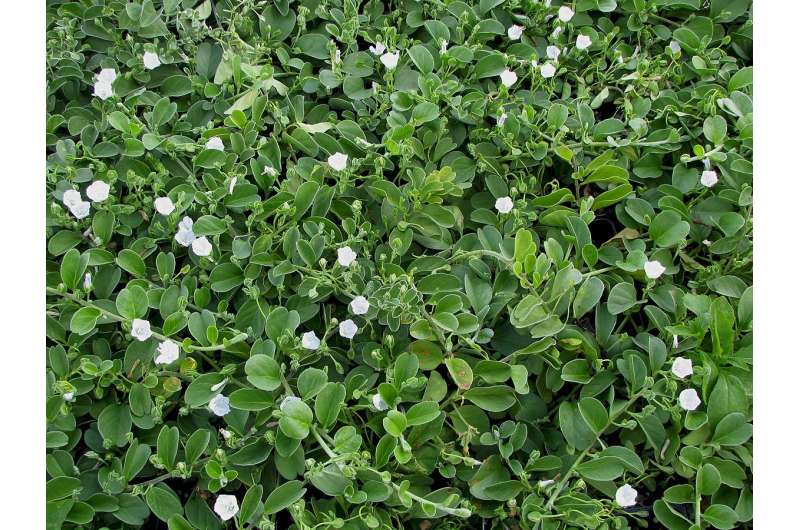Rising seas put salinity stress on Hawaiian coastal plants

With the increased likelihood of extreme weather events and sea-level rise associated with climate change, flooding poses a major risk to coastal regions. Seawater flooding is not only a threat to many already-threatened ecosystems, but also can cause socio-economic costs to the many millions of people that live on the coastal fringes around the world.
This threat has traditionally been countered by the construction of 'hard defenses' such as concrete walls. This solution often proves to be expensive, inflexible, and of limited value to local biodiversity. Modern coastal management practices now recognize the need to integrate man-made engineering solutions with natural ecosystems, or 'soft-defenses.' Consequently, across the world, many coastal (sand dunes, salt marshes, mangroves) habitats are now recognized for their important contribution to flood defense.
Only recently have ecologists begun to examine how these ecosystems will respond to and recover from prolonged seawater immersion. In light of their crucial role in soft infrastructure, it is imperative that scientists strive to understand how coastal plants and vegetation respond to the saltwater flood risk associated with rising sea levels and storm surges.
Tiffany D. Lum—a Masters student at the University of Hawaii at Manoa, Honolulu, HI—will present her research on salinity tolerance in a coastal plant species and how it affects plant reproduction resilience. Because plant population persistence depends on successful seedling recruitment, seedling survival to maturity, and reproduction, it is important to know how increased salinity will influence each of these processes.
Lum and her advisor Kasey E. Barton sought to quantify salinity tolerance in a widespread and abundant native coastal plant species: Jacquemontia sandwicensis (Convolvulaceae). They wanted to identify mechanisms underlying the overall tolerance across the plant's lifecycle and through each developmental stage.
The plants were exposed to three weeks of salinity watering treatments at the seed, seedling, juvenile, and mature ontogenetic stages. Tolerance was quantified as the performance and fitness under salinity treatment; for example, higher photosynthetic rates and higher total mass in comparison to control groups. They found that the plants do exhibit some trait plasticity to avoid salinity stress in the short term, useful at early life stages. However, a delayed onset of flowering and fewer produced seeds suggest that salinity exposure at different life stages may threaten the resilience of this species in light of future sea level rise and storm surges.
The talk is part of a session about optimizing management of coastal ecosystems in the face of climate-driven threats.
Provided by Ecological Society of America

















